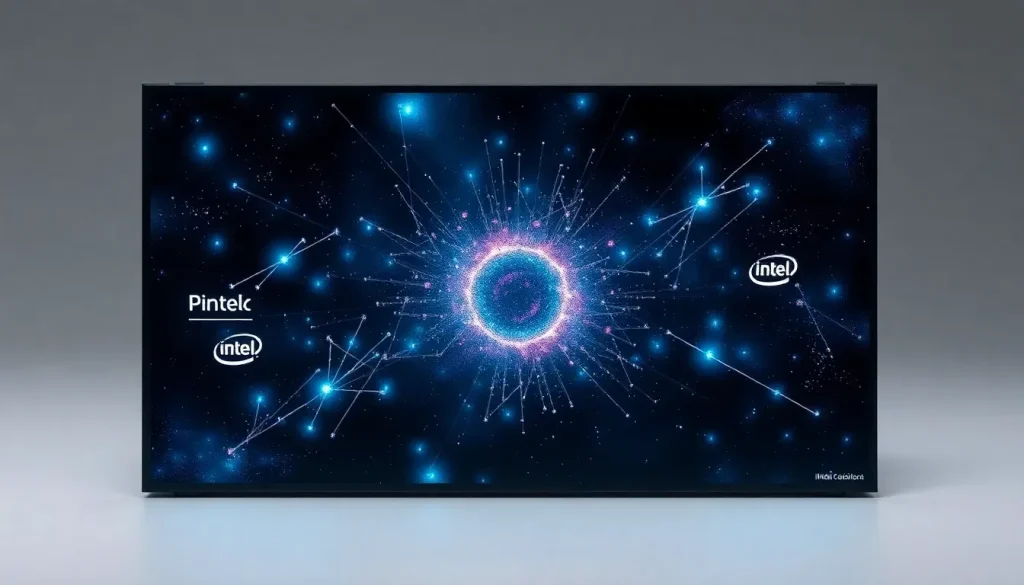Intel Panther Lake-H and U: Core Ultra X and Xe3 Celestial Specs

Since its inception in the 1970s, Intel has been a dominant player in the processor market, catering to both consumer and industrial needs. While its golden era might seem like a thing of the past, the company continues to innovate and compete, especially against AMD, which has steadily gained ground in recent years. The upcoming generation of laptop processors, set to be unveiled on October 9, 2025, promises significant advancements with a total of 12 SKUs across the Panther Lake-H and Panther Lake-U series.
AMD's ascent in the processor market can be attributed to several key factors. In the desktop CPU landscape, AMD's X3D models have outperformed their Intel counterparts, particularly in gaming performance. Intel's attempts to compete by increasing core counts and clock speeds have fallen short. In the server sector, AMD's EPYC and Ryzen Threadripper processors have demonstrated superior core counts, better performance, and more attractive pricing options.
Overview of Panther Lake laptop family: 12 SKUs across 4 categories
The laptop segment remains a stronghold for Intel, with AMD’s offerings in this space not compelling enough to sway the majority of consumers. Intel's laptop processors are known for their decent performance, low power consumption, and long battery life, making them a popular choice for a wide range of users. While AMD has made strides with its Ryzen processors, it has yet to match Intel's appeal in the laptop market.
The new Panther Lake series will debut with a total of 12 SKUs, categorized into three main types: Core Ultra X, Panther Lake-H, and Panther Lake-U. Here’s a breakdown of the configurations:
- Core Ultra X: 4 models
- Panther Lake-H: 4 models
- Panther Lake-U: 4 models
Starting with the Core Ultra X, the flagship model is the Intel Core Ultra X9 388H, featuring 4 P-Cores, 8 E-cores, 4 LPE-Cores, and a robust iGPU with 12 Xe3 Cores. The next in line is the Core Ultra X7 368H, which shares similar core configurations but maintains 12 Xe3 Cores. Moving down the line, the Core Ultra X7 358H offers the same core setup, while the Core Ultra X5 338H reduces the number of E-cores to 4 and boasts 10 Xe3 Cores.
Core Ultra X processors with enhanced graphics capabilities
For the Panther Lake-H series, the top model is the Core Ultra 9 375H, featuring 4 P-Cores, 8 E-cores, 4 LPE-Cores, and a graphics unit with 4 Xe3 Cores. Following closely is the Core Ultra 7 355H, also equipped with similar P-Core and E-Core configurations but limited to 4 Xe3 Cores. This lineup also includes the Core Ultra 7 345H with the same specs, and lastly, the Core Ultra 5 325H, which has 4 P-Cores, 4 E-cores, and 4 Xe3 Cores.
In the Panther Lake-U series, the lead model is the Core Ultra 7 360U, which offers 4 P-Cores, 4 LPE-Cores, and 4 Xe3 Cores. The Core Ultra 5 350U and Core Ultra 5 340U hold the same configuration, while the entry-level Core Ultra 3 320U features 2 P-Cores, 4 LPE-Cores, and 4 Xe3 Cores.
Analyzing the core configurations and performance potential
The introduction of Panther Lake processors emphasizes Intel's strategy of diversifying its offerings to cater to different user needs. By segmenting its product line, Intel can target a broader audience, from casual users to power users demanding high performance. Each SKU is designed with particular use cases in mind, ensuring that consumers have a range of options to choose from.
- Core Ultra X: Aimed at high-performance laptops and gaming.
- Panther Lake-H: Targeted towards professional use and demanding applications.
- Panther Lake-U: Optimized for ultra-portable devices focusing on efficiency and battery life.
With the expected specifications, the Panther Lake series is poised to compete well in a market that is increasingly driven by performance and efficiency needs. The combination of high core counts and advanced integrated graphics positions these new processors as viable options for various users, from gamers to professionals working with intensive applications.
Competition and future outlook for Intel processors
Despite Intel's continued innovation, the competition with AMD remains fierce. AMD's recent successes with its Ryzen and EPYC processors have not only captured market share but have also pushed Intel to enhance its offerings continually. As both companies strive for technological advancements, consumers can expect to benefit from better performance, efficiency, and value.
The upcoming presentation will likely reveal more detailed specifications, including clock speeds and power consumption details, which will be crucial for potential buyers to consider. As the laptop market evolves, Intel’s Panther Lake series may redefine the competitive landscape once again.




Leave a Reply